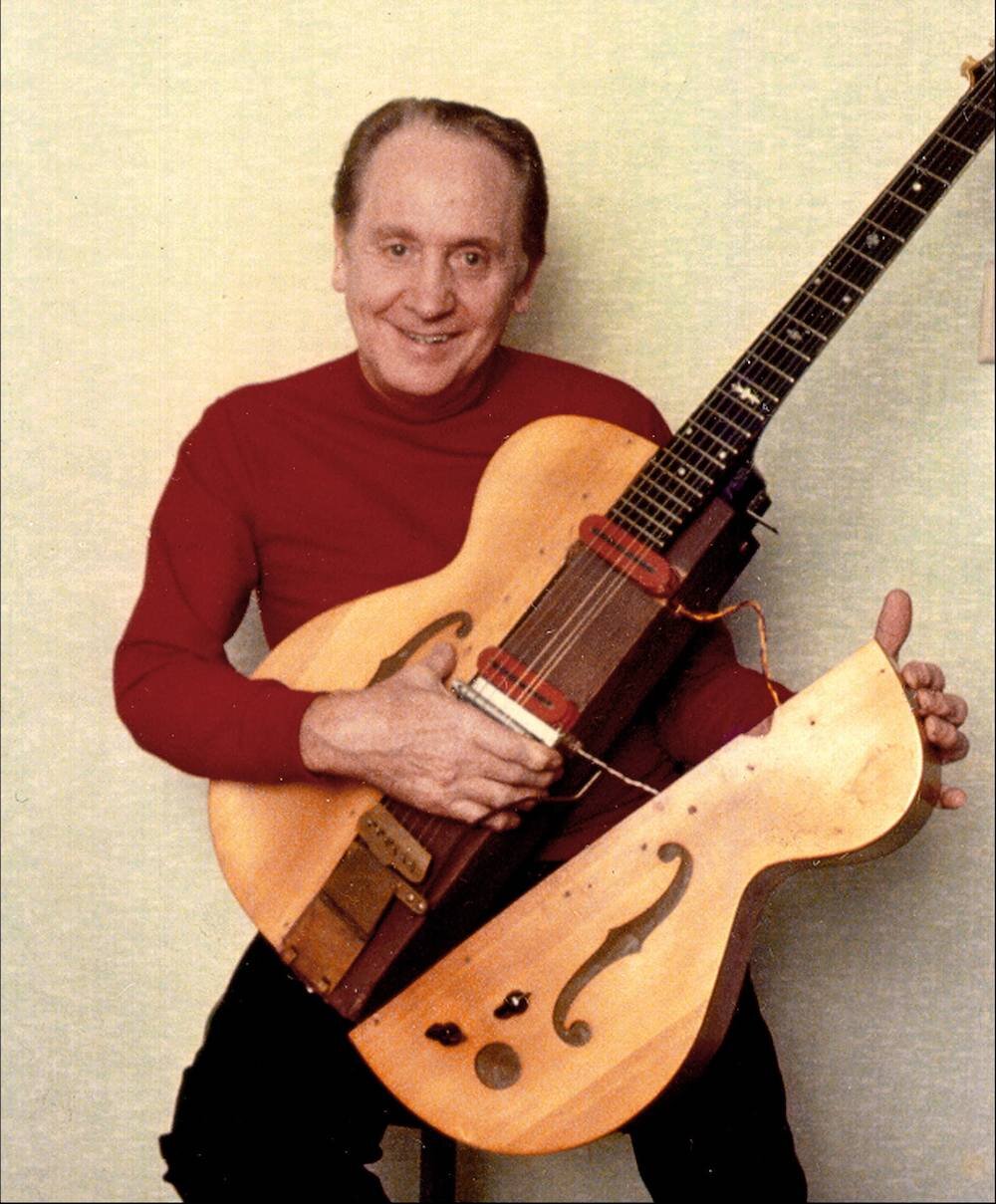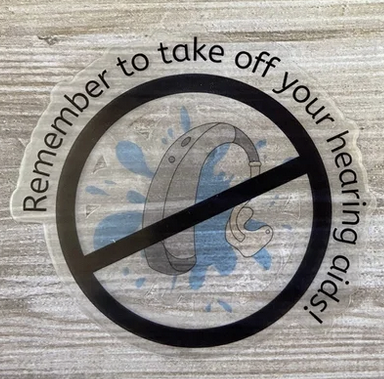By Les Paul from his memoir, with input from Sue Baker
Music legend Les Paul is famous for inventing the solid body electric guitar and other innovations related to recording music. Less known is that he also had a hearing loss and wore hearing aids in both ears. A tinkerer his whole life, Les describes the creation of the guitar in his autobiography, “Les Paul in His Own Words.”
”I got my first guitar in 1927 at the age of 11. It was a little Troubadour flat top from Sears and Roebuck, a cheap little bow-wow that cost less than five dollars. I was so proud of that little guitar and spent most of my spare time playing it... anywhere somebody would listen.”
While the Log instrument had the sound Les Paul wanted, it didn’t look like a traditional guitar and met with a lukewarm response until he added nonfunctioning guitar wings to the center base.
When he started performing as a young teen, Les was known as Red Hot Red because of the color of his hair. He played regularly at a drive-in barbecue stand and was convinced his tips would increase if the people in the back of the audience could hear him sing too.
He figured out how to amplify his voice and harmonica by mounting the mouthpiece from his mother’s telephone onto a wooden broom handle and wiring it to her radio. But then he was handed this note: “Red, your voice and harmonica are fine, but your guitar’s not loud enough.”
That sparked Les Paul’s search for how to amplify his guitar.
“I took my dad’s radio-phono player and took the tone arm off the phonograph and just jammed the needle right down into the guitar’s bridge and taped it in place. Then I turned up the volume and played through the amplified speaker. With my homemade microphone, I ran my voice and harmonica through my mother’s radio, and the guitar through my dad’s phonograph.”
Les Paul had just created an electric guitar! It was around 1928.
“I loved the way my guitar sounded coming out of the speaker, so I started trying different things to deaden the vibration and stop the feedback. I tried filling the guitar up with tablecloths and shorts and socks to muffle the sound…. That was a step in the right direction, but not the solution. So then I poured it full of plaster of Paris.”
That was the end of the troubadour.
Looking to sustain a sound without feedback, Les experimented with a two-foot piece of discarded rail and two spikes he got from the railway across the street from his house.
“I took a guitar string and fastened it at each end of the steel rail, using the spikes like a bridge and nut to raise the string so it could be plucked. Then I took a telephone microphone, wired it into Mom’s radio for amplification, and placed it on the rail under the string.… The tremendous solidity of the rail allowed the string’s vibration to sustain for a longer time, and there was no feedback.”
Though usually very encouraging to Les, his mother pointed out the Rail was not a practical guitar.
In 1931, he got a Dobro guitar that had a metal resonator. A few years later, he purchased a Gibson L5, dubbed the cheapie, which became his favorite guitar when performing around the country.
Les was a great innovator and experimenter,” said Paul McCartney, shown in the photo from May 1988.
While in Chicago he expanded on what he learned from his plaster of Paris experiment. He had a guitar built with a half-inch solid top to which he added his homemade pickup. When that proved too heavy, he had a thinner version made.
Around 1935, Les customized a Bell & Howell speaker designed for 16 mm film to create his first guitar amplifier that wasn’t a converted radio. He was constantly experimenting with his guitars, searching for a better sound.
One of Les Paul’s experiments to deaden his guitar’s vibration and stop feedback included pouring the hollow sound box full of plaster of Paris.
“I kept tearing up guitars experimenting with my electric sound, but I always used my Gibson cheapie when I played electric with [Fred] Waring, and it drove the Gibson guys nuts. They tried everything to get me to change, but my little guitar had the sound that became my identity on the radio, and I stayed with it until my family of klunkers [three Epiphone guitars] came along.
“I was looking for volume, tone, and sustain that could be controlled, still chasing the idea that started with stretching a guitar string over a section of railroad rail. I took a length of 4x4 pine, put an Epiphone neck on it, wound a couple of homemade pickups, and mounted them on the wood. Then I added a bridge and a Vibrola tailpiece, strung it up, and I had the Log. It was crude, but when I plugged it into an amp, it worked.” (Pickups are magnets wrapped in wire that convert the vibrations of the guitar strings into electrical signals that can be amplified.)
When Les played the Log at a club, the response was lukewarm. “I went back to the Epiphone factory, took the sound box of an old Epiphone archtop, and sawed it in half right down the middle. Then I braced up the halves so they could be attached to the sides.”
When he played his Log with the wings, a shape that looked more like a guitar, he got an enthusiastic response. Les concluded, “People hear with their eyes.”
In 1941, he took the Log to Gibson and tried to convince them that solid body electric guitars were the future. The response was laughter. Typical of the man, he kept going back to Gibson. It took almost 10 years before Gibson would build Les Paul’s design for a solid body electric guitar and even then, they hesitated to put the company’s name on it. Les told them, “Put my name on it,” and that is how a boy who wanted his guitar to be heard created the solid body electric guitar of rock stars.
Les applied that same persistence as he searched to improve hearing aids. He moved past his initial devastation at losing his hearing and focused on how to improve hearing aids until the end of his life. Les, whose birthday was June 9, 1915, passed away in 2009, three years after the publication of his autobiography.
The Les Paul Foundation continues Les’s search to improve hearing through annual funding to Hearing Health Foundation’s Emerging Research Grants program to find a cure for tinnitus.
Sue Baker is the Les Paul Foundation’s program director. The Les Paul Foundation supports tinnitus research through HHF’s Emerging Research Grants program. For more, see lespaulfoundation.org.










A quiet activist is using videos to promote science fact over noise fiction.